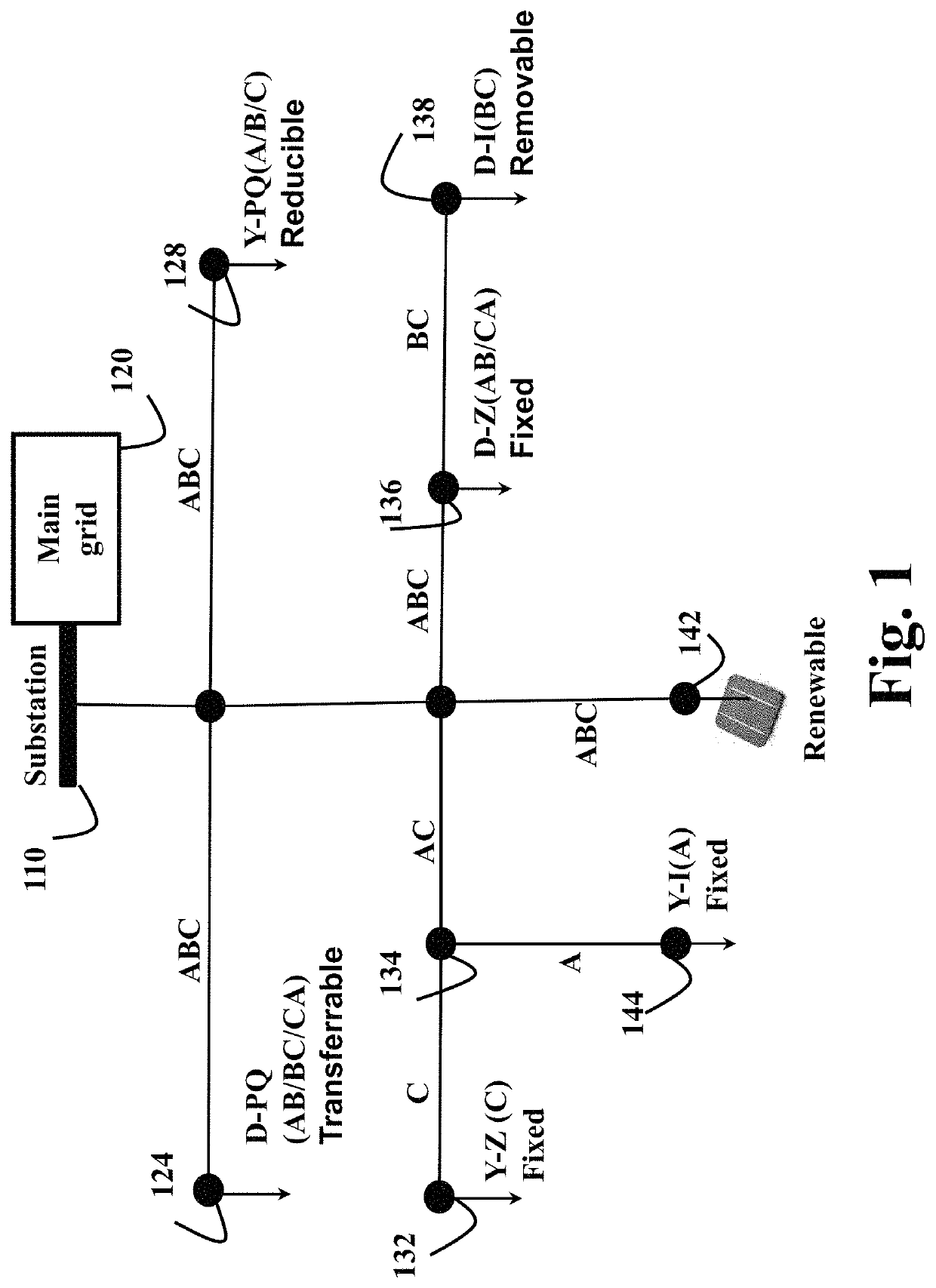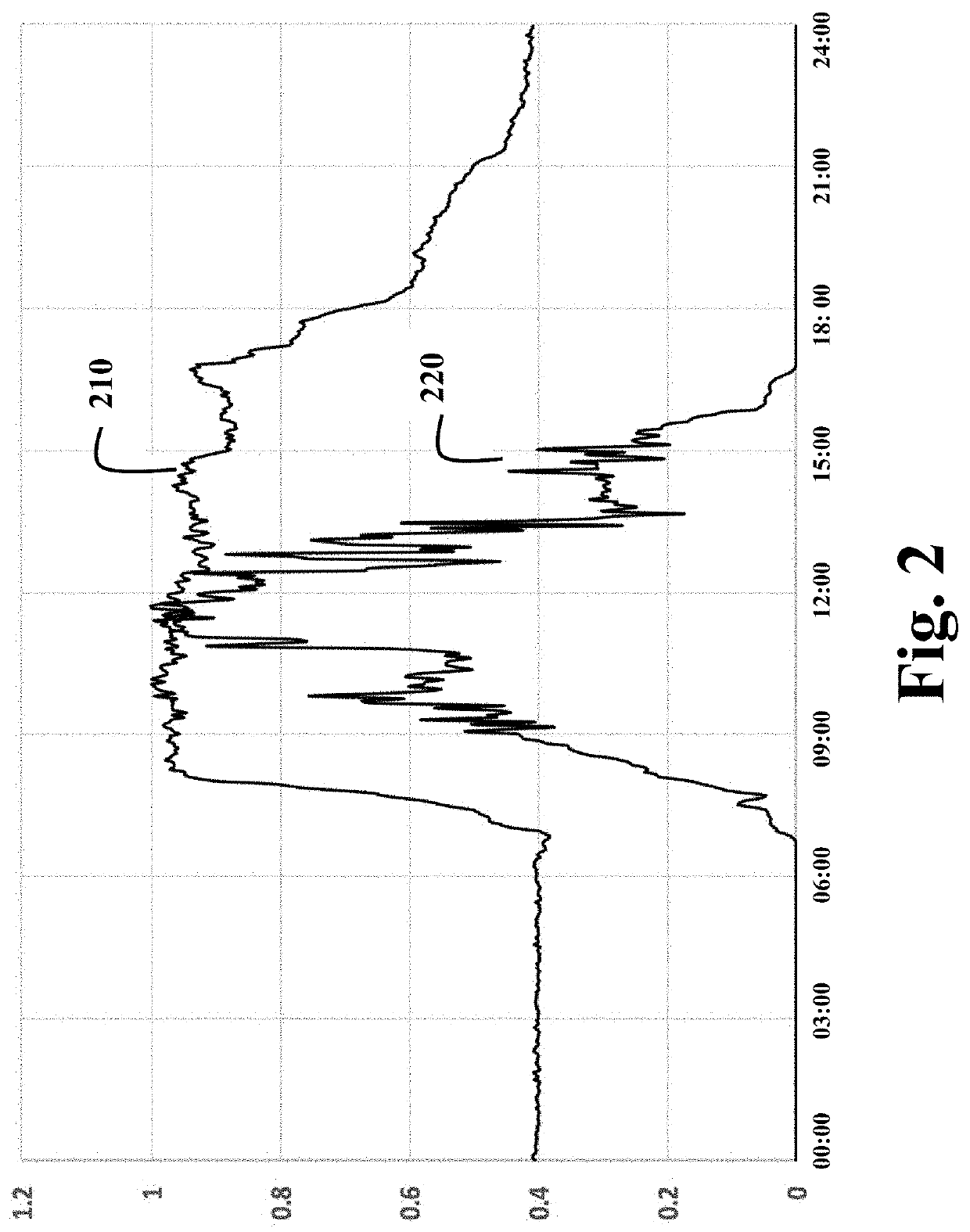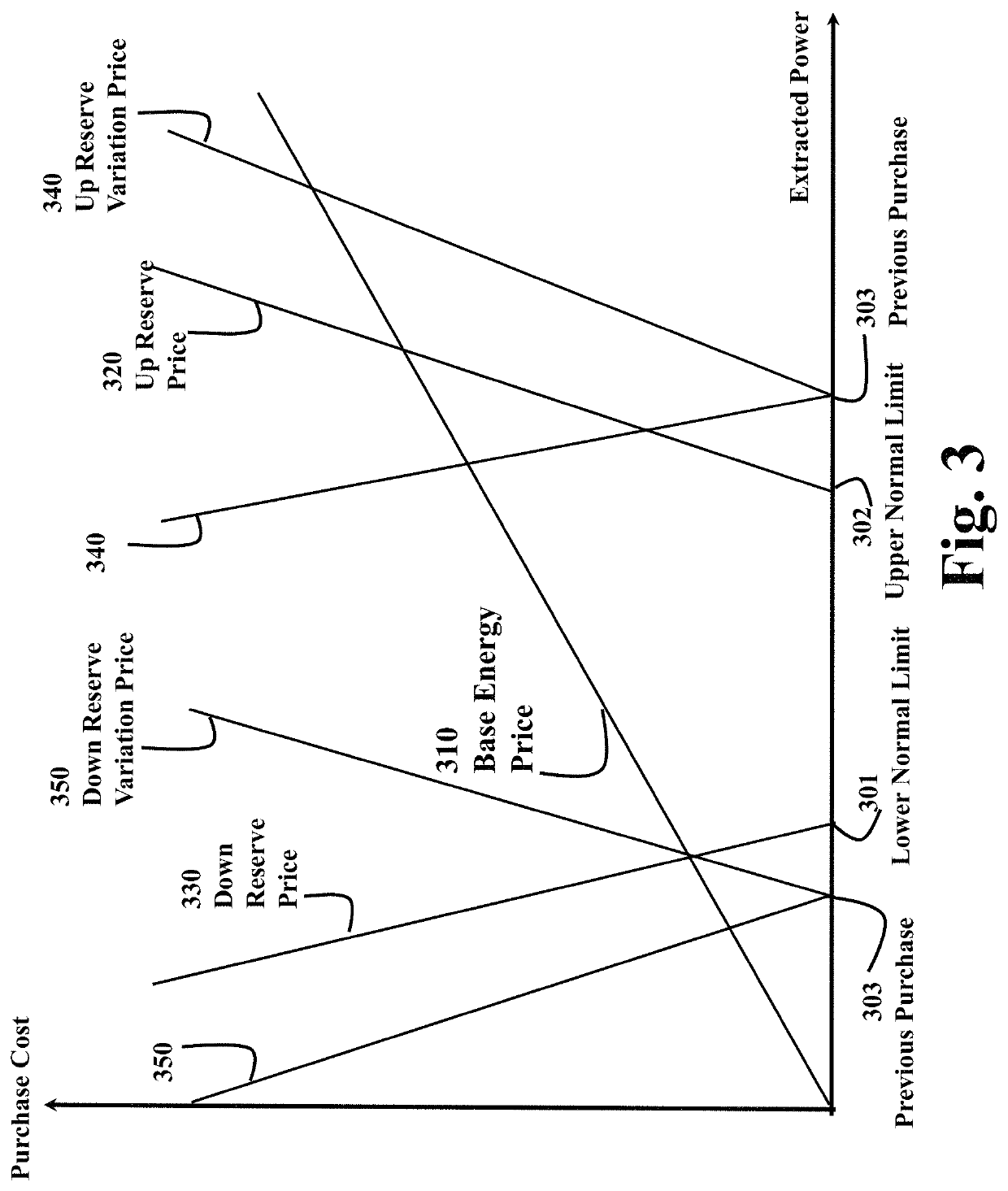Reducing substation demand fluctuations using decoupled price schemes for demand response
a substation demand and price scheme technology, applied in the field of power distribution systems, can solve the problems of significant increase in the volatility of substation demand due to fluctuations in generation capacity, and achieve the effects of reducing the volatility of substation demand, and smoothing out the volatility
- Summary
- Abstract
- Description
- Claims
- Application Information
AI Technical Summary
Benefits of technology
Problems solved by technology
Method used
Image
Examples
Embodiment Construction
[0019]The embodiments of the invention provide a method for reducing substation demand fluctuations using decoupled price schemes of demand response. In particular, the embodiments of the invention decouple a substation price model with separate components for the base-load unit power production cost from the reserve unit power production cost.
[0020]Distribution System Modeling
[0021]The method can be used in power distribution systems with significant renewable generations. FIG. 1 shows an example of such a distribution system. The system includes a substation bus 110, and a photovoltaic generation at bus 142. The substation bus 110 is connected to a main grid 120. Distribution operation is optimized based on the decoupled prices given at the bus 110.
[0022]A typical power distribution system is usually radial-configured, and its loads, branches or generations can be three-phase unbalanced. Therefore, each phase separately models during its operation and control. For example, the lin...
PUM
 Login to View More
Login to View More Abstract
Description
Claims
Application Information
 Login to View More
Login to View More - R&D
- Intellectual Property
- Life Sciences
- Materials
- Tech Scout
- Unparalleled Data Quality
- Higher Quality Content
- 60% Fewer Hallucinations
Browse by: Latest US Patents, China's latest patents, Technical Efficacy Thesaurus, Application Domain, Technology Topic, Popular Technical Reports.
© 2025 PatSnap. All rights reserved.Legal|Privacy policy|Modern Slavery Act Transparency Statement|Sitemap|About US| Contact US: help@patsnap.com



